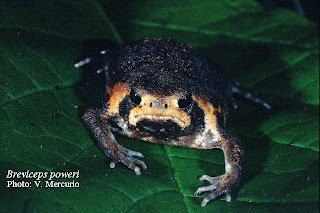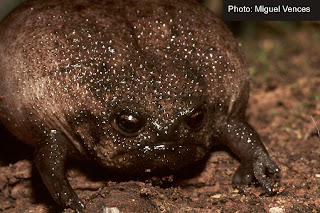Biodiversity can be defined as the number and variability of species, genes and communities, temporally and spatially (Sepkoski 1997). Understanding past biodiversity is important if one wants to understand the evolutionary processes that generated present biodiversity. However, our understanding of biodiversity is strongly influenced by factors such as: completeness of the fossil record, taxonomic accuracy, precision of dating fossils and quality of preservation of these fossils (Sepkoski 1997). In the present essay, past biodiversity and the methods used to reconstruct past biodiversity will be discussed.
Reconstructing the ecological history of the Calamiteans
Wang
et al (2006) used fossils and comparative anatomy and morphology to reconstruct various aspects of extinct Calamiteans (a group of gymnosperms). Today, only one extant genus, namely
Equisetum spp is known. A permineralized fossil stem of
Arthropitys yunnanensis was found in a mine spoil at Housuo Coal Mine, eastern Yunnan Province, southwestern China, preserved in volcaniclastic tuffs. The stem dated back to the upper Permian. The stem was cut into a longitudinal and horizontal section using a rock saw. Subsequently exposed surfaced were prepared by the acetate peel technique using HCl (hydrochloric acid) to notch the carbonate matrix. The fossil stem showed morphological and anatomical features that have subsequently been lost in modern species. From the study they found that
A. yunnanensis had a thick secondary xylem with growth rings, which suggests that the species experienced frequent fluctuations in environmental stresses, such as water availability during drought. The lignified secondary xylem of the stem suggested that it had a semi-self supporting habit. Leaf traces arranged in two whorls were found in the cortex. This indicated that
A. yunnanensis had oblique to vertical leaves, which is in contrast with the generalization that members of the genus
Arthropitys all had horizontal leaves. The study neatly showed how Calamiteans have changed over time and in addition gave some idea of what the general habit during the Upper Permian.
Using the fossil record to reconstruct the history of Ichthyosaurus
In a paper by Martill (1996), the morphology, anatomy and habit of the Ichthyosaurs; extinct marine tetrapods are described based on fossil evidence, dentition and comparative anatomy. These reptilian, but presumably warm-blooded tetrapods were exclusively marine. Hence, the fossil record shows numerous well preserved specimens. These animals are usually preserved in open marine sedimentary rocks, such as clays and shale which is slightly enriched with organic carbon. These organisms first appear in the fossil record in the lower Triassic, at which stage it resembled the crocodilians. Early Jurassic specimens show a change in body form, and resembled primitive dolphins. The fossil record shows temporal changes in dentition amoungst these organisms, which also suggest changes in feeding habits. Specimens have been found in Posidonia Shale of Southern Germany (around the Late Jurassic), that showed soft tissue outlines, stomach contents and even the embryo in the body cavity. From the soft tissue, it was observed that the width and length of the limbs of Early and Late Jurassic forms were greatly enhanced. The latter suggests that these forms had a rapid means of locomotion. When stomach contents were examined, hooklets of belemnites were found, and rarely fish remains (fish remains were only found in juvenile guts). The belemnites were bottom dwelling mollusks and this suggests that the Ichthyosaurs fed in deeper water. In support of the latter idea, specimens such as Ophthalmosaurus of the Early Jurassic had enormous eyes which are thought to have enhanced vision during feeding in deeper dark water. It is thought that Ichthyosaurs underwent a transition from surface piscivory to deeper water molluscivory during its life cycle. Like other oceanic sea breather, the bone of Ichthyosaurs was spongy as a way of reducing its body density. From fossil evidence of these animals, we can witness changes in body forms over evolutionary time as well as reconstruct the way in which they lived.

Figure 1: Middle Triassic-Late Cretaceous fossil Ichthyosuarus
http://en.wikipedia.org/wiki/Image:Fishchsaurier-fg01.jpg
Using gall in Psaronius fronds to reconstruct the ecological history of Holometabola
Labandeira and Philips (1996) tried to reconstruct the ecological history of Holometabola from fossil Psaronius tree-fern fronds found from the Upper Pennsylvanian Mattoon Formation of Illinois Basin. The occurrence of insect herbivory during the Late Carboniferous has been questioned, and in the study done by Labandeira and Philips (1996) they suggest that modern insect herbivore types were essentially established in Late Pennsylvanian coal swamp forests. Fossil galls were found in the fronds of Psaronius, and were observed as abnormally-looking parenchyma tissue surrounded by nutritive tissue. The accumulation of this nutritive tissue is the host plants response to endophagous herbivory. The central lumen of the gall was filled with frass (including undigested ground tissue and fecal pellets). The presence of these large, barrel-shaped, solid fecal pellets with fractured ends was evidence that the endophague was a Holometabolan larva. They further suggest that the Holometabolan larva displayed host and tissue specificity (Labandeira and Phillips 1996).


Figure 2: a) Psaronius tree fern, 7 m tall and host of the earliest known plant gall b) Fronds of fossil Psaronius containing gall ca= undigested frass, co=coprolite, lu=gall lumen, nt=nutritive tissue, pa=unmodified parenchyma, vt= vascular tissue.
Labandeira and Philips (1996)
Fossils in Amber
Amber is a form of fossilized tree resin, which has been known to trap various small invertebrates such as insects, spiders and other terrestrial arthropods. Amber fossils provide detailed morphological comparisons with extant relatives of extinct taxa. Arthropods in Amber are known to provide information on past biogeographical distributions and serves as a good indicator of past climatic regimes. Syninclusions (where more than one specimen is entrapped in the resin) provide valuable information on the interaction between organisms (for example: predation, maternal care, mating, parasitism etc.). Further more, the rapid mode of fixation and dehydration during amber formation, may be sufficient to preserve DNA. The latter idea has been questioned, but is more likely than finding DNA in any other fossil type (Penny 2006).

Figure 3: Winged ants in Dominican amber. Formed in a tropical climate, typically 16 million years old. Penny (1996)
Invertebrates are usually poorly represented in the fossil record. However, Sutton
et al (2001), show yet another way in which soft-bodied invertebrates can be preserved over geological time. Soft bodied organisms that dominate the Silurian Herefordshire fauna of England were fossilized as three dimensional calcitic fossils within spherical to sub-elliptic calcareous nodules. Here, serial grinding and digital photographic techniques were used to capture three- dimensional morphological information. Serial grinding involves the sequential removal of material via abrasion, from a single planar surface, which is subsequently photographed at each stage (Sutton
et al. 2001).
Fossils do not only provide knowledge on past biodiversity, but also on the environments in which extinct taxa lived. Various techniques exist on how to effectively process fossils to yield the highest possible resolution. However the techniques used depend on the fossilized organism and the substrate.
References
http://en.wikipedia.org/wiki/Image:Fischsaurier_fg01.jpg
Labandeira C, Phillips T (1996) A Carboniferous insect gall: Insight into early ecologic history of the Holometabola.
Proceedings of the National Academy of Science of the United States of America 93: 8470-8474
Martill D (1996) Fossils explained 17: Ichthyosaurs.
Geology Today 194-196
Penny D (2006) Fossils in Amber: Unlocking the secrets of the past.
Biologist 53(5): 247-251
Sepkoski J (1997) Biodiversity: Past, Present, and Future.
Journal of Paleontology 71 (4) 533-539
Sutton M, Biggs D, Siveter D 1, Siveter D 2 (2001) Methodologies for the Visualization and Reconstruction of three-dimensional fossils from the Silurian Herefordshire Lagerstatte.
Palaeontologia Electronica 4 (1): 1-17
Wang S, Hilton J, Galtier J, Tian B (2006) A large anatomically preserved calamitean stem from the Upper Permian of southwest China and its implications for calamitean development and functional anatomy.
Plant Systematics and Evolution 261: 229-244
























